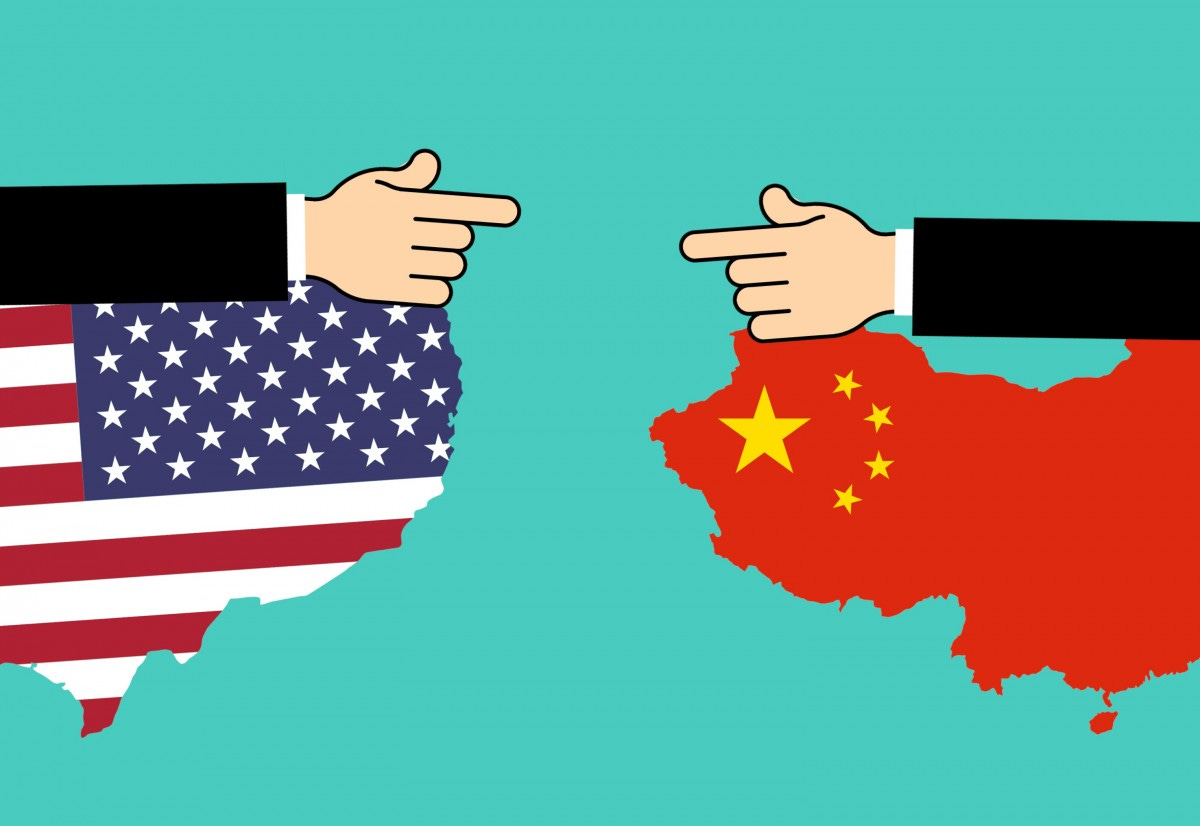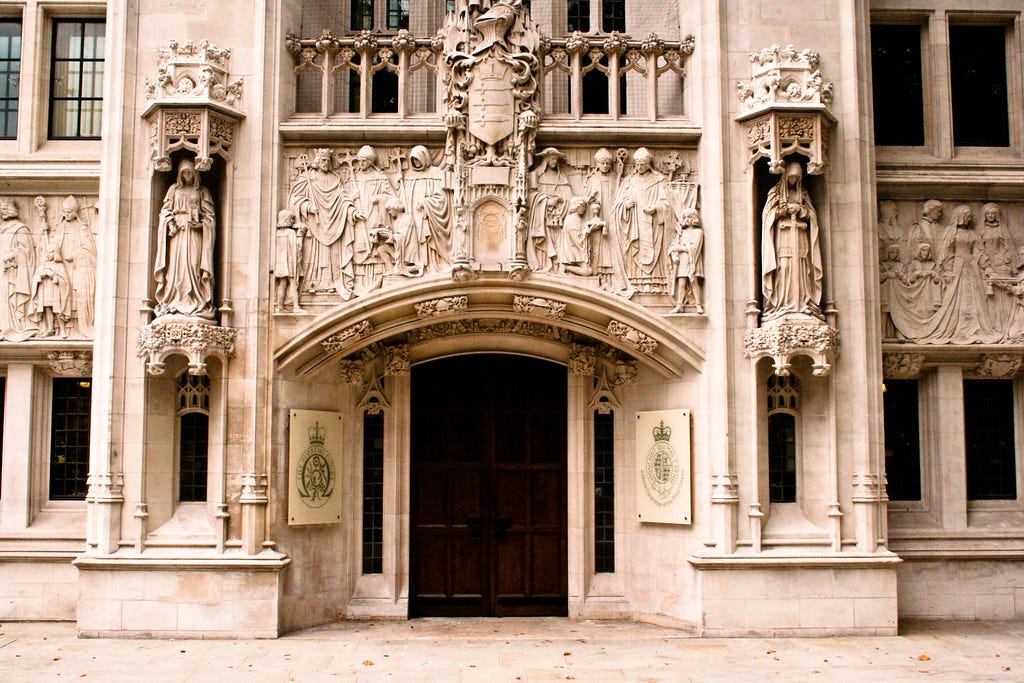Friday, September 27, 2019
Political Disruption brings you insights on how the fast-changing global political environment is creating a political disruption of business.
Good Morning!
This week we give you an update on the trade wars that are brewing. These conflicts encompass countries responsible for half of global GDP (US, UK, EU, Japan, South Korea).
Welcome to a new week of Political Disruption!
Hans
(You can also follow me on Twitter: @hans_diels or LinkedIn: https://www.linkedin.com/in/hansdiels)
US-China Trade War
Forecast: Ambiguity over the aims of the trade conflict (on the US side) and its embeddedness in the broader geopolitical rivalry between the US and China leads us to forecast more turbulence in the trade relationship, no substantial deal and much uncertainty. We expect in the medium and long-term more tariffs, sanctions, investment and export controls.

A few weeks ago I argued why the prospects of a final negotiated solution to the trade war between the US and China are nihil given US ambiguity over its preferred outcome and the geopolitical linkages of the conflict. (read it again here).
At this moment US and Chinese officials are preparing for higher-level talks that would be held in early October. There have been some positive gestures with the Chinese buying US agricultural products again and the US exempting 400 Chinese products from tariffs. However, we remain pessimistic about the prospects of a substantial deal. in addition, President Trump declared that he did not think he needed a deal for his re-election:
I don’t think I need it before the election. I think people know that we’re doing a great job,”
Brexitland
Forecast: Uncertainty remains very high on Brexit. A hard Brexit on October 31 is still not off the table but became less likely given new parliamentary options to constrain the PM or force him to resign. After new elections (probably November/December) a Johnson victory is still possible and with it a hard Brexit. An opposition victory would probably (if they succeed in forming a government) lead to a softer Brexit (single market/customs union).

UK Supreme Court (https://www.flickr.com/photos/faundez/3921112328)
What has happened? The UK Supreme Courte ruled that it was unlawful for PM Boris Johnson to prorogue parliament. It argued that:
prorogation has the effect of frustrating or preventing, without reasonable justification, the ability of Parliament to carry out its constitutional functions as a legislature and as the body responsible for the supervision of the executive.
While Boris Johnson said he would abide by the ruling he also said he “profoundly disagreed” with it, setting the stage for a ‘people vs. parliament and judges’ election.
Is this important for Brexit? Now parliament is meeting again, it can come up with new ways to force Johnson to choose between resigning or humiliating himself by asking Brussels for a Brexit extension.
What’s happening now? Johnson is still trying to reach a deal with the EU, he has already abandoned the idea of frictionless trade over the Irish border floating a hybrid system using technological solutions to perform product checks away from the border. Northern Ireland would partially align with EU rules on food and agricultural products. In this way, health checks on the border could be eliminated. As agriculture accounts for only 30% of north-south trade in Ireland, there would still be border controls for 70% of trade, creating a formal border.
Why is the EU playing this so hard? The European Single Market is based on the principle that goods can travel freely between member states and that they all have to conform to the same standards. All goods that are produced outside the single market have to demonstrate they conform to EU standards. Even if the UK would be able to agree on some kind of mutual recognition agreement with the EU (as the UK’s standards are at this moment exactly the same as the EU’s), a soft border in Ireland would create a risk that products from third countries (e.g. China or the US) could come into the EU without appropriate checks.
What will happen next? No one really knows.
But the prospect for an agreement on Boris’ terms seems more weakened given his weak domestic position.
The deadline remains October 31, unless Johnson requests an extension (and the EU grants it). Johnson could still refuse to ask for an extension, creating a lot of havoc in the UK’s political system, but realizing a hard Brexit.
But without an agreement or an extension request, the default option is still a hard Brexit on October 31.
The most likely outcome is an extension to January 31, but then the Brexit saga just continues…
Japan-South Korea
Forecast: We don’t expect the issue to be solved before South Korea’s legislative elections in April next year. After the elections, a solution becomes more probable. Before that, we can expect more formal and informal measures taken by both South Korea and Japan that will further disrupt trade between the two.

How did it start? Japan and South Korea are engaged in an escalating conflict that risks disrupting supply chains in East Asia. Last autumn South Korea’s supreme court awarded damages against Japenese companies for forced labour during the second world war. Japan thought this issue was already settled through a 1965 treaty and the compensation Tokyo paid to Seoul. South Korea disagreed, arguing that individual claims can still be processed in court.
What happened next:
Japan imposed controls on chemicals required by South Korea’s semiconductor manufacturers.
Seoul declared it will end the intelligence-sharing agreement between Japan and South Korea.
Tokyo removed Seoul from its ‘white list’ of trusted trade partners.
Seoul filed a complaint at the WTO over Japan’s export restrictions.
Consumers in South Korea boycott Japanese products. Koreans cancelled their holidays in Japan and sales of Japanese cars halved compared to last year.
US-EU: The coming trade war?
Forecast: While a minor escalation is possible and new tariffs can't be excluded, we expect no major escalation of the trade war between the EU and the US.

Phil Hogan, the new European Commissioner for external trade starting in November
What happened until now? The EU was hit by US steel tariffs of 25 per cent on steel and 10 per cent on aluminium products under national security grounds. The EU retaliated on $3.2 billion US ‘iconic’ products (Harley Davidson, bourbon whisky, blue jeans…) with tariffs from 10-50% (list).
What’s coming up?
Cars. In mid-November, a report will be published deciding whether automobile imports in the US are a national security threat. This could lead to tariffs on all cars and car parts coming from the EU.
Aircraft. Tit-for-tat tariffs could also come up due to the Boeing-Airbus subsidy disputes at the WTO.
Wine and digital services. The US is still considering punitive tariffs on French wine in retaliation of the French plan to impose a digital services tax on US firms.
Towards a Japan deal? The US closed a deal with Japan, with agricultural market access (to Japan) in exchange for some minor concessions on industrial tariffs (by the US) and an unconvincing promise by the US not to impose car levies. It seems very unlikely that the EU would agree to such an agreement.
Leverage. The EU has also a lot more leverage than Japan, but also than China. According to data from the Office of the U.S. Trade Representative, the U.S. imported $683.9 billion of EU goods and $557.9 billion from China. So the amount of goods that can be targetted is roughly similar. However, US exports to the EU reached $574.5 billion, compared to only $179.2 billion to China. This implies a lot more potential retaliation in case the EU-US trade war would really escalate. The question is whether Trump would risk a second front in the trade war in an election year when the US economy is already slowing down.


